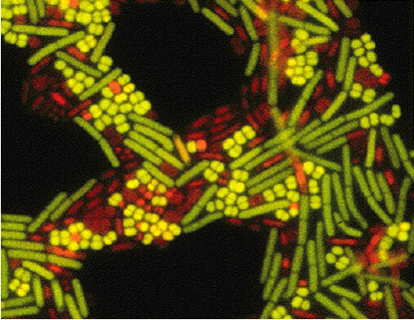Set up an interview
Media Relations
Agriculture and Agri-Food Canada
1-866-345-7972
aafc.mediarelations-relationsmedias.aac@agr.gc.ca
Antibiotics play a crucial role in animal and human health, but their frequent use is linked to antimicrobial resistance, which severely hinders the effectiveness of these drugs in combating disease.
To understand how livestock and food production systems contribute to antimicrobial resistance, Agriculture and Agri-Food Canada (AAFC) research scientist Dr. Ed Topp is coordinating a research collaboration involving scientists from across the government.
This collaboration, through the federal Genomics Research and Development Initiative, is already making significant progress after only three years. The team is using the Integrated Rapid Infectious Disease Analysis software recently developed by federal scientists to analyze large amounts of DNA sequences of resistant bacteria.
Using this new software enhances Canada's ability to detect and monitor resistant bacteria throughout the food chain. It also helps scientists to better understand which antibiotic resistant bacteria found in poultry, swine, beef, and the environment can affect humans.
Scientists have identified a specific plasmid, a small DNA molecule within bacteria, that makes Salmonella Heidelberg resistant to antimicrobes found in chicken and retail poultry. This specific strain of salmonella bacteria has been known to make humans sick.
The team also looked at whether bacteria found in beef production could affect people, other animals, and the environment. Results so far indicate that Enterococcus bacteria, the bacteria found in the human gut and bowel, clearly differ between humans and cattle. This suggests that these bacteria found in cattle are unlikely to make people sick; good news for producers and Canadian consumers.
"Bacteria are found in people, in animals, as well as in the environment, and they circulate easily from one to the other. That is why we need the ‘One Health’ approach to understand whether and how antibiotic use in food production is contributing to AMR in humans. To do this we need to compare bacteria collected from sick people in hospitals, from animals used for food, and from the environment where these animals live. If they are similar then there is a greater chance that one can infect another."
- Dr. Ed Topp, Research Scientist, Soil and Environmental Sciences, Agriculture and Agri-Food Canada
This five-year research project will ultimately improve the understanding of antimicrobial resistance that are of concern to both animal and human health.
Key Discoveries/Benefits
- AAFC is coordinating a five-year research project aimed at understanding antimicrobial resistance that is a concern to both animal and human health.
- Using the Integrated Rapid Infectious Disease Analysis software, researchers are better able to detect and monitor antibiotic resistant bacteria throughout the food chain and help scientists determine which of the resistant bacteria found in poultry, swine, beef and the environment can affect humans.
- Enterococcus bacteria differ between humans and cattle. That means bacteria that grow in the guts of cattle are less likely to get people sick.
Photo gallery

